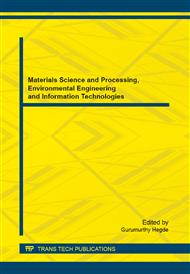[1]
W.R. Strohl, D.M. Knight. Discovery and development of biopharmaceuticals: current issues. Current Opinion in Biotechnology. 20 (2009) 668–672.
DOI: 10.1016/j.copbio.2009.10.012
Google Scholar
[2]
B. Leader, Q.J. Baca, D.E. Golan. Protein therapeutics: a summary and pharmacological classification. Nature Reviews Drug Discovery. 7 (2008) 21–39.
DOI: 10.1038/nrd2399
Google Scholar
[3]
M.C. Serrano, E.J. Chung, G.A. Ameer. Advances and applications of biodegradable elastomers in regenerative medicine. Advanced Functional Materials. 20 (2010) 192–208.
DOI: 10.1002/adfm.200901040
Google Scholar
[4]
J. G. Alauzun, S. Young, R. D'Souza, L. Liu, M. Brook. Biocompatibal, hyaluronic acid modified silicone elastomers. Biomaterials. 31 (2010) 3471–3478.
DOI: 10.1016/j.biomaterials.2010.01.069
Google Scholar
[5]
R. Chapanian, M.Y. Tse, S.C. Pang, B.G. Amsden. Long term in vivo degradation and tissue response to photo-cross-linked elastomers prepared from star-shaped prepolymers of poly(ε-caprolactone-co- D, L-lactide). Journal of Biomedical Materials Research Part A. 92 (2010).
DOI: 10.1002/jbm.a.32422
Google Scholar
[6]
R. Chapanian, B. Amsden. Osmotically driven protein release from photo-cross-linked elastomers of poly (trimethylene carbonate) and poly (trimethylene carbonate-co-D, L-lactide). European Journal of Pharmaceutics and Biopharmaceutics. 74 (2010).
DOI: 10.1016/j.ejpb.2009.11.012
Google Scholar
[7]
B.G. Ilagan, B. Amsden. Macroporous photocrosslinked elastomer scaffolds containing microposity: Preparation and in vitro degradation properties. Journal of Biomedical Materials Research Part A. 93 (2010) 211–218.
DOI: 10.1002/jbm.a.32482
Google Scholar
[8]
B. Amsden, B. Qi. Anti-atherosclerotic peptide delivery from a photocrosslinkable biodegradable network. International Journal of Pharmaceutics. 388 (2009) 32–39.
DOI: 10.1016/j.ijpharm.2009.12.030
Google Scholar
[9]
B. Amsden, G. Misra, F. Gu, H.M. Younes. Synthesis and characterization of a photo-cross-linked biodegradable elastomer. Biomacromolecules. 5 (2004) 2479–2486.
DOI: 10.1021/bm049578h
Google Scholar


